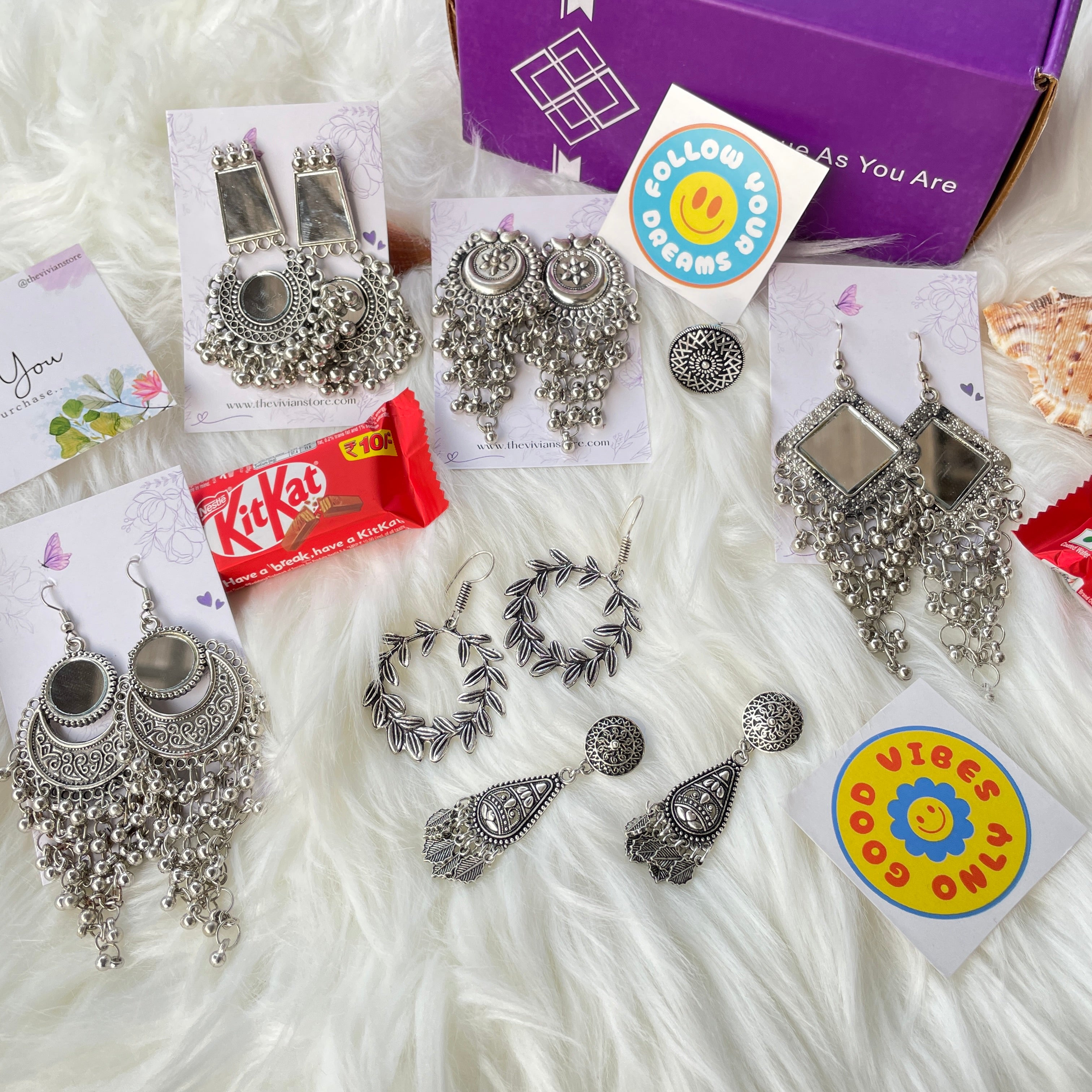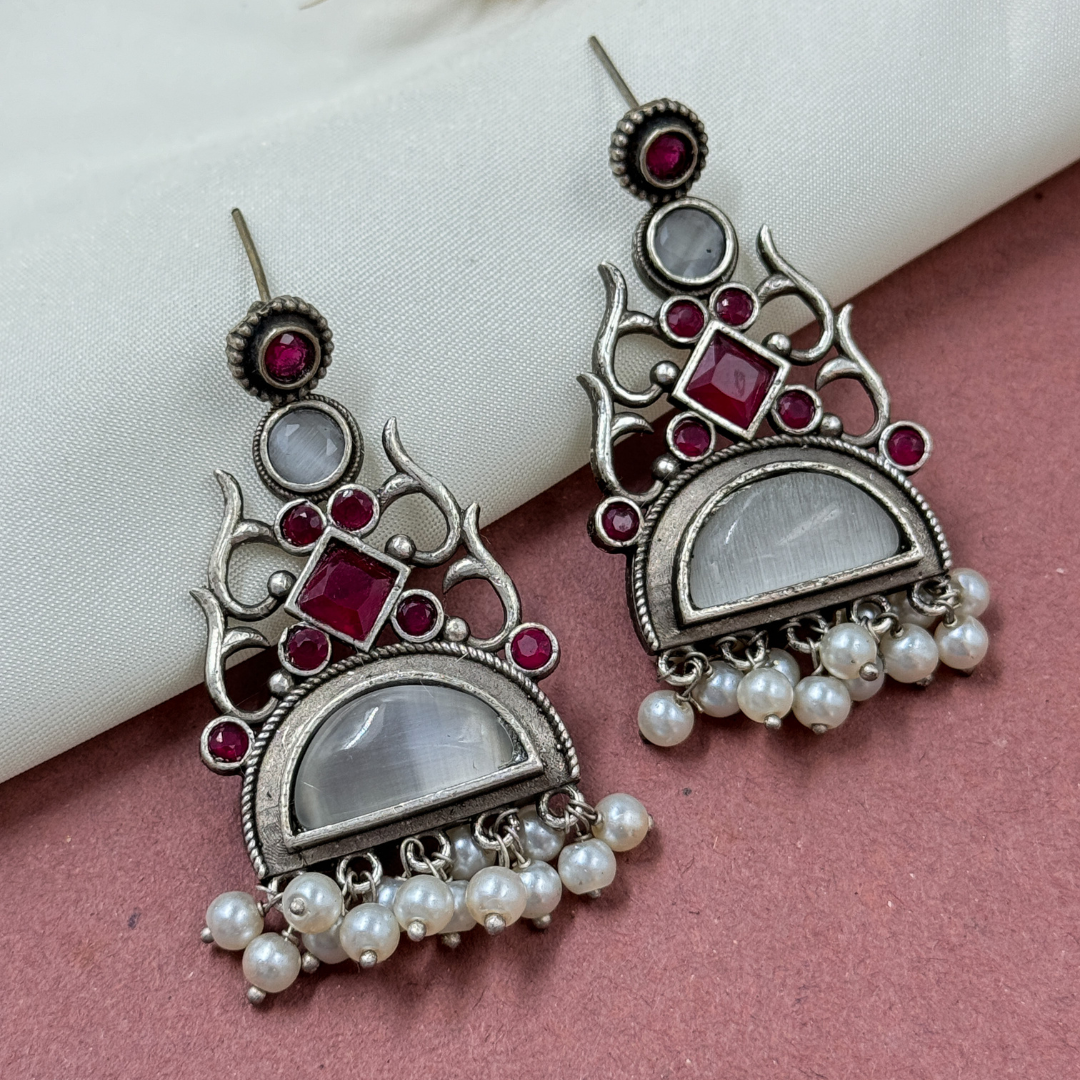Exploring the Rich History of Jhumka Earrings
Step into the world of elegance and tradition as we delve into the rich history of jhumka earrings. These iconic pieces have adorned women for centuries, adding a touch of glamour and cultural significance to any outfit. Join us on a journey through time as we explore the origins and symbolism behind these timeless treasures. Let's uncover the beauty and heritage that make jhumka earrings truly special in this fascinating exploration of their history.
Introduction to Jhumka Earrings
Jhumka earrings, also known as jhumki or chandelier earrings, are a popular and timeless jewelry piece that has been a part of Indian culture for centuries. These striking earrings are characterized by their bell-shaped design and intricate dangling elements, making them an eye-catching addition to any outfit.
The history of jhumka earrings can be traced back to ancient India, where they were first worn by traditional dancers and royalty. The word "jhumka" is derived from the Sanskrit word "jhumki," which means hanging ornaments. These earrings were traditionally made from gold or silver and adorned with precious gemstones, reflecting the wealth and status of the wearer.
In Indian culture, jhumkas hold significant cultural and religious symbolism. They are believed to bring good luck and prosperity to those who wear them. In some regions, they are considered a symbol of marriage and worn by brides on their wedding day. These earrings are also associated with spirituality as they resemble bells that are often used in Hindu temples during prayers. Over time, jhumkas evolved to incorporate different designs and materials while still maintaining their signature bell-shaped silhouette. They became more accessible to people of all social classes with the introduction of imitation jewelry made from cheaper materials such as brass or copper.
Today, jhumka earrings have become a staple in Indian fashion and can be found in various styles to suit different tastes. Traditional jhumkas feature intricate filigree work inspired by Mughal architecture, while contemporary versions may include colorful enamel work or modern geometric designs.
While traditionally worn with ethnic outfits such as sarees or salwar kameez suits, jhumkas have also found their way into western fashion trends.
Many celebrities around the world have been spotted wearing these statement earrings on red carpets and runways.
In recent years, there has been a resurgence in the popularity of jhumka earrings among young women who appreciate its cultural significance and unique design. With the rise of sustainable fashion, artisanal jhumkas made by skilled craftsmen using traditional techniques have also gained popularity. Jhumka earrings hold a rich history and cultural significance in Indian society. They are not just a piece of jewelry but also a representation of tradition, beauty, and spirituality. Whether worn for special occasions or as an everyday accessory, these graceful earrings continue to enchant people with their timeless allure.
Origin of Jhumka Earrings
Jhumka earrings, also known as Jhumki or Jhumkaa, have a rich and colorful history that dates back centuries ago. These iconic earrings are a popular choice among Indian women and are often seen as an essential part of their traditional attire. The origin of Jhumka earrings can be traced back to the ancient civilizations of India, particularly in the states of Rajasthan, Gujarat, and Punjab.
In ancient times, Jhumkas were primarily made using natural materials like gold, silver, copper, and brass. They were initially worn by royalty and noblewomen to showcase their wealth and status in society. These early versions of Jhumkas were simple in design with minimalistic engravings but gradually evolved to become more intricate with time.
During this period, each region had its unique style of crafting Jhumkas. For example, in Rajasthan, Kundan work was used to embellish these earrings with precious gemstones like rubies, emeralds, and diamonds. In Gujarat, Meenakari work was popular for its vibrant colors and intricate designs on metal surfaces.
With the rise of Mughal influence during medieval times came a significant change in the design of Jhumkas. They became grander and more ornate with elaborate engravings inspired by Islamic art forms like calligraphy and geometric patterns. These lavish pieces were adorned by both men and women from wealthy households. Over time, as trade routes expanded across Asia through India's ports during British colonial rule in India (1858-1947), foreign influences began to seep into Indian fashion. This led to the incorporation of new materials like pearls and enamel work in Jhumka earrings, making them more versatile and fashionable.
In modern times, Jhumkas have become a staple accessory for both traditional and contemporary attire. They come in various sizes, shapes, and designs to cater to different occasions and personal styles. Some popular variations include temple-style Jhumkas inspired by South Indian temple architecture, filigree Jhumkas with intricate metalwork, and tribal-inspired Jhumkas with vibrant beads. The origin of Jhumka earrings is deeply rooted in India's rich cultural heritage, evolving over time to become an iconic piece of jewelry that continues to hold immense significance among women across all generations.
Cultural Significance of Jhumka Earrings
Jhumka earrings have been an integral part of Indian culture for centuries, and their cultural significance cannot be overstated. These beautiful and intricately designed earrings hold a special place in the hearts of Indian women, not just as pieces of jewelry but as symbols of tradition, heritage and identity.
One of the earliest references to jhumka earrings can be found in ancient Hindu scriptures like the Rig Veda and Atharva Veda. In these texts, they are described as "karnika", which translates to "earring" in Sanskrit. They were traditionally worn by women during religious ceremonies and auspicious occasions such as weddings or festivals. Over time, jhumkas became more than just ceremonial jewelry and evolved into a fashion statement that reflected regional customs and traditions. Each region in India has its own distinct style of jhumka earrings, with unique designs, materials and techniques used in their making. For example, the iconic Kashmiri jhumkas are known for their intricate filigree work while Rajasthani jhumkas feature vibrant enamel work.
Apart from being a symbol of regional diversity, jhumka earrings also hold religious significance. The bell-shaped design is said to represent fertility and prosperity while the dangling pearls or beads are believed to bring good luck. This is why they are often passed down through generations as heirlooms or gifted during significant life events.
In addition to their traditional importance, jhumkas have also played a role in popular culture. They have been prominently featured in Bollywood movies since the 1960s when actresses like Sharmila Tagore and Hema Malini made them a fashion staple on-screen. Today, they continue to be favored by celebrities both on- and off-screen.




Leave a comment
This site is protected by hCaptcha and the hCaptcha Privacy Policy and Terms of Service apply.